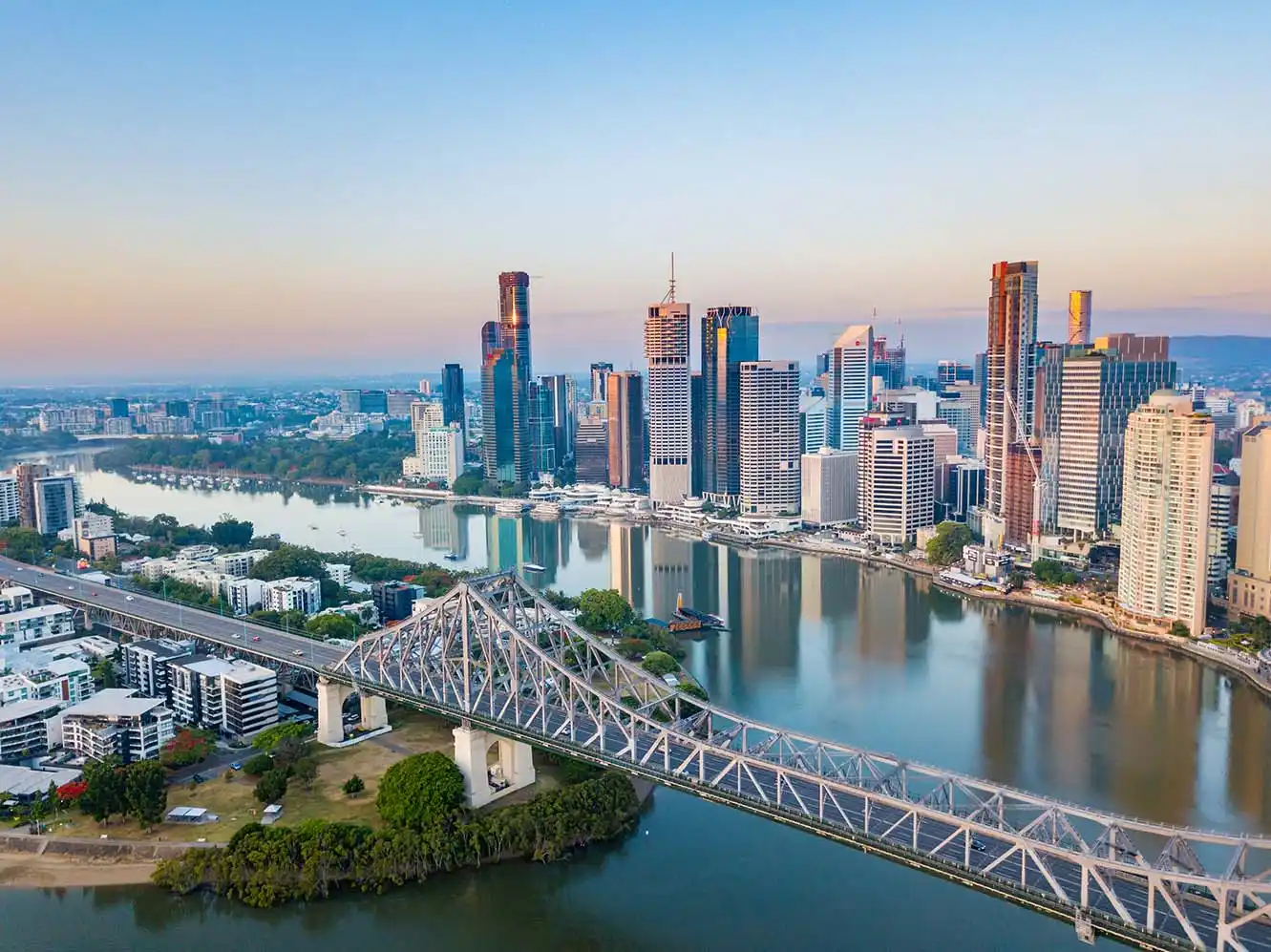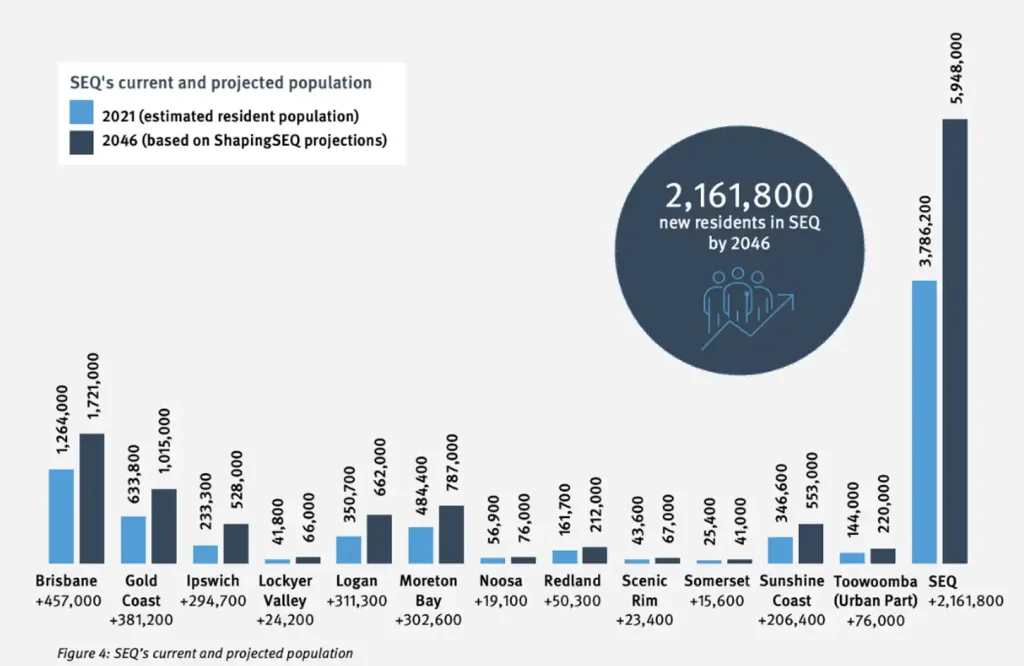
Shaping SEQ 2023 Review: What does it address?
Posted in InvestmentThe lure of South East Queensland over the last few years has meant the government has had to completely rewrite its 25-year plan just six years after making it.
It was 2017 when the Queensland State Government put forward ShapingSEQ 2017, an extensive, forward-looking report which had forecasted significant growth for the region to 2041.
But given the current housing pressures, largely driven by an unexpected spike in population growth which occurred due to the COVID-19 pandemic, as well as the awarding of the 2032 Olympics Games, the government has had to go back to the drawing board. In August they released the draft of ShapingSEQ 2023
Queensland Deputy Prime Minister Steven Miles, who is also Minister for State Development, Infrastructure, Local Government and Planning, said in the comprehensive 137-page dossier that when the Premier convened the inaugural Housing Summit in October 2022, industry asked for the government to review the South East Queensland Regional Plan, ShapingSEQ 2017.
“The review reflects new and emerging priorities influencing the growth narrative in SEQ,” Miles said.
“It responds to the region’s projected growth to 2046, having regard to the opportunities and challenges for maintaining and enhancing the region’s sustainability, global competitiveness and high-quality living opportunities.”
The headline of the report is that the government will seek to bring 863,000 new dwellings to South East Queensland by 2046 to try and keep up with demand.
We’ve worked our way through the report and pulled out the key takeaways.
Population
The biggest need for the updated report was the drive in population in South East Queensland. The 2017 report had forecast the population to hit 5.349 million by 2041, which would have required more than 30,000 new dwellings each year.
Now the updated forecasts are for the population to reach nearly six million by 2045, which will require over 34,500 new dwellings a year. Population is forecast to grow by 1,600 people a week.
“Net interstate migration to Queensland reached record levels in the year to June 2022, with SEQ accommodating almost 80 per cent of this growth,” the report read. The government believes net overseas migration is expected to make a strong contribution to the population growth, with a significant short-term increase to 2026. They then expect growth will return to long-term trend levels by 2030/31.

Queensland is projected to gain an additional 2.2 million people from both overseas and interstate migration. Around 38 per cent will come from overseas, over 25 per cent from interstate, and eight per cent will come from elsewhere in Queensland.
The question then to be answered is a simple one. Where are all of these people going to live?
What will be done about housing?
Demand is far outstripping supply in Queensland, as it has been for a number of years. The target for the new Draft Plan is to provide 900,000 new dwellings by 2046. In the 2017 ShapingSEQ Plan, the Queensland Government said they would need to build 30,000 new dwellings each year to keep up with population growth. That figure is now 34,500.
“The supply of housing is not keeping pace with demand, and the impact of this supply shortfall is being felt most acutely in the private rental market,” the report noted.
“In September 2022, residential vacancy rates across SEQ were at historic lows and were below one per cent in all markets analysed except for the Brisbane CBD, which sat at just about one per cent.”
There are currently 1.54 million dwellings across South East Queensland’s 12 local government areas. 68.9 per cent of that is detached.
One of the main points the report noted in regards to households was that the demographic composition has, and will continue, to change, with households increasingly becoming smaller.
“SEQ is seeing an increase in one-person households, from 23.4 per cent in 2021 to 40.5 per cent by 2046, and a higher small household to small dwelling ratio. The ageing population will contribute to the increased smaller households, due to older people’s tendency to live in smaller homes.”

The report also noted that extended family households are becoming more common, and there’s been a decline in families with dependent children, but an increase in couple only families, especially older couples.
“While it is difficult to understand the exact impact of changes in household size to smaller households, it is estimated that each 0.01 per cent fall in persons per household requires around 8,500 additional homes.
“Housing stock will need to suit the needs and preferences of future residents, including the ‘household market’.”
The report suggests there’s a need for more attached housing, given both the rise in one person households, and the increasing demand for homes to serve as short term accommodation, removing some properties from the longer term rental market which is already putting pressure on the rental market.
“The lack of diversity in homes being delivered in most SEQ markets has meant there are reduced opportunities for younger people to remain within their local community (due to low housing affordability) and for empty nesters to downsize within their local community (due to a lack of suitable downsizing opportunities).
What will be done about housing?
Unsurprisingly, the capital city has the biggest dwelling growth target. Their target is to have another 210,000 dwellings by 2046, from 518,500 to 728,200. The Gold Coast will see 158,100 new homes, from 271,400 to 429,500.
The Moreton Bay Region will score another 123,00 dwellings, Ipswich 107,900, Logan 108,400, and the Sunshine Coast 80,600.
The overall 863,600 dwellings to be built will see dwelling numbers jump from 1,536,500 to 2.41 million.
There will be an expectation from relevant state agencies and local governments to map out how they will meet dwelling supply targets for two, five and 10 year timeframes.
Affordability Constraints
A big issue facing South East Queensland is the lack of affordability.
Data exclusively obtained from property data analytics firm CoreLogic showed that while house prices in Brisbane declined -8.9 per cent in the 12 months to July due to the nationwide downturn, the preceding two years saw a near 40 per cent jump.
The likes of Ipswich, Moreton Bay, the Gold Coast, Noosa and Logan, all had growth of closer to 45 per cent between July 2020 and July 2022.
“The cost of housing in Australia has grown significantly in recent decades as the price of houses and apartments have risen faster than average household incomes, with higher purchase prices flowing through to the cost of renting,” the Report noted.
t stated that it is being felt acutely in South East Queensland, where the bulk of urban growth is and will continue to occur.
“An overall lack of suitable housing, including through private led development as well as social and affordable housing provision, is contributing to increased rental stress, mortgage stress, social housing demand and homelessness.”
The diversification of housing supply is key to improving housing affordability in SEQ. Housing affordability is not a one-size-fits-all solution, and diversity of housing means a diverse range of solutions that can also support affordable living.
The shift to more attached housing is necessary to enable greater housing diversity across SEQ with the aim to improve housing choice and affordability. However, the split within attached housing is equally important.
Steven Miles said “we cannot rely on traditional models and greenfield style development as the only answer for housing affordability given what we know about people’s changing preferences and choices.”
“The simple fact is urban sprawl leads to bad outcomes for people and the environment – and affordable housing near the CBD and around rapid public transport leads to better outcomes for both people and the environment.”
Where Gallery Group fit in
Gallery Group has extensive house and land opportunities all across South East Queensland. Their latest is Vue Nambour, a development of just 10 oversized lots ranging from 501 sqm to 1,017 sqm.
The town, considered an inland commercial hub on the doorstep of the mountains but just 15 kilometres inland from Maroochydore, has a real demographic spread, from young couples, families with kids, and retirees. The fact there’s so much going on in the town centre, Nambour saw its population jump by nearly 25 per cent over the five years to the 2021 Census.
The development backs onto Bailey Street Park and is less than two kilometres from the heart of Nambour where there’s a full commercial precinct with retail, cafe, restaurants and bars, as well as the Nambour Train Station which connects a train station that connects Nambourians to Maroochydore in 30 minutes.